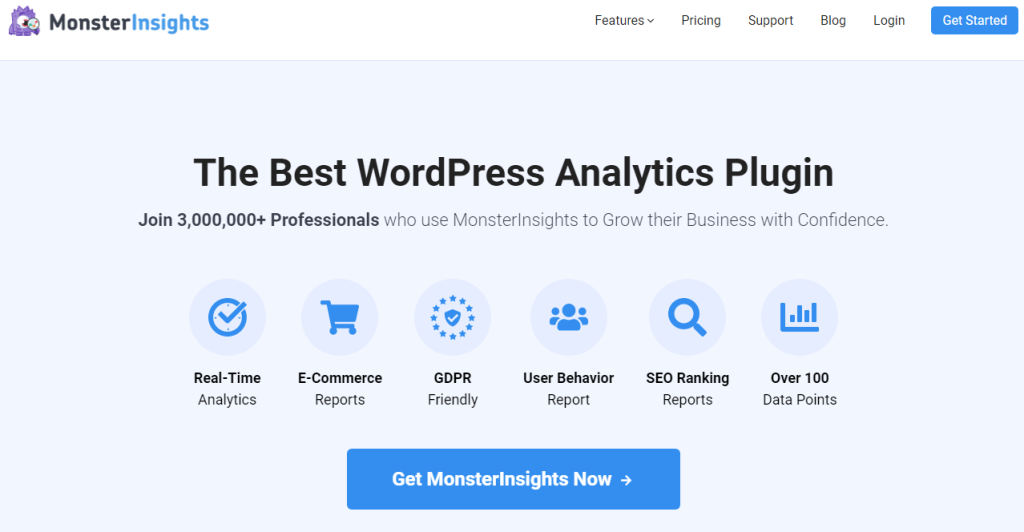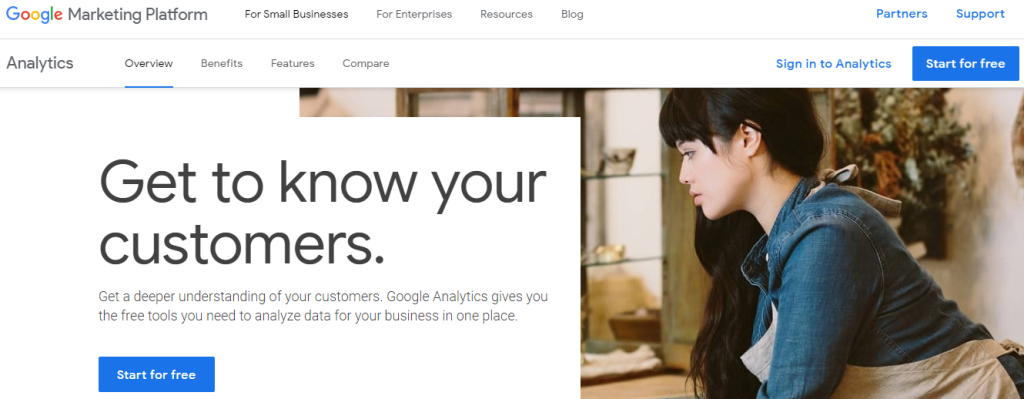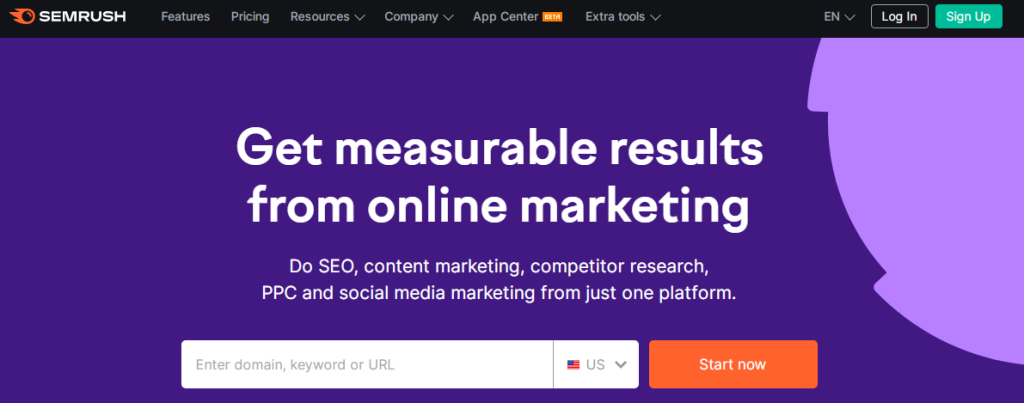10 Website Goals & Objectives to Set
Setting goals for your website isn’t just about hitting arbitrary numbers but creating a clear path for online success. Having well-defined goals can guide your website’s strategy, help measure progress, and ultimately contribute to your business’s success. In this article, we’ll break down 10 essential website goals and objectives you should set, complete with examples to get you started.
What Are Website Goals & Objectives?
Website goals and objectives are the targets set for a website to achieve within a given timeframe. In essence, meeting these goals ensures online success to a great extent, as they are crucial for the business’s success. After establishing measurable website objectives and goals, you can compare real results and identify areas for improvement.
Create SMART Website Goals
Understanding the importance of setting goals for a website is crucial. However, aiming for unrealistic targets, like millions in revenue within a month, is not always practical. Instead, the goal should be SMART, an acronym that stands for:
- S: Specific
- M: Measurable
- R: Relevant
- A: Attainable
- T: Time-bound
For example, a SMART goal for someone starting a new website could be: “I want to have 100 organic visitors in the first 3 months.”
- Specific: Mr. X wants 100 organic visitors in 3 months.
- Measurable: The goal is quantifiable with a clear target number.
- Attainable: With the right marketing plan, this target is achievable.
- Relevant: It’s realistic for a new site to gain 100 organic visitors in 3 months with a proper strategy.
- Time-bound: The goal has a clear deadline of 3 months.
Setting SMART goals helps website owners achieve practical and calculated results.
Why Does Your Website Exist?
Before setting website goals, you need to understand your website’s purpose. Clarify what you want to achieve with your website:
- Do you want to make money?
- Do you aim to increase revenue for your offline business?
- Do you need to generate leads for your business?
- Do you wish to establish an online brand?
Answering these questions will guide you in setting relevant goals for your website.
10 SMART Website Goals & Objectives (with Examples)
Here are some SMART website goals you can set:
1. Enhance Brand Awareness among the Audience
Brand awareness measures how familiar consumers are with your brand or its products and services.
A SMART goal example: “I want to increase my new product’s online awareness to encourage 30% more in-store purchases over the next month.”
How to achieve it: Utilize social media to boost brand awareness. For instance, Instagram is effective for creative industries, while Twitter suits B2B companies. Engage your audience with relevant posts, questions, and user-generated content.
2. Increase Overall Website Traffic
Web traffic indicates the number of unique visitors to your website.
A SMART goal example: “I want to have 1000 direct visitors to my site in Q4 2024 by posting blog posts weekly.”
How to achieve it: Focus on content marketing. Create high-quality content optimized for search engines, and use catchy headlines to boost click-through rates.

3. Improve Ranking for Important Keywords
Higher search engine rankings lead to more clicks and traffic.
A SMART goal example: “I want to move my main keyword from page 2 to page 1.”
How to achieve it: Optimize content for both readers and search engines, create quality backlinks, and focus on broader SEO factors like page speed and user experience.
4. Improve Onsite User Experience
User Experience (UX) is crucial for a competitive edge.
A SMART goal example: “I want to improve customer satisfaction by 10% after the website redesign by the end of next quarter.”
How to achieve it: Use simple fonts and colors, ensure easy navigation, and create a visually appealing and user-friendly interface.
5. Lower Bounce Rate
A lower bounce rate indicates that visitors stay on your site and engage with the content.
Here A SMART goal example can be: “I want to decrease the bounce rate of my website to 25% over the next quarter.”
How to achieve it: Improve website navigation, optimize content formatting, and ensure fast page loading speeds.

6. Increase the Average Number of Pages Visited by Each User
More pages visited per session can indicate engaging content.
A SMART goal example: “I want a 25% increase in average page views per visitor by interlinking relevant pages.”
How to achieve it: Create valuable content and interlink related pages to encourage visitors to explore more.

7. Increase Email Subscribers
Growing your email list allows for more direct communication with potential clients.
A SMART goal: “I want to add 100 new subscribers to the newsletter in the next 60 days.”
How to achieve it: Use compelling calls to action, create sign-up forms or pop-ups, and offer incentives like discounts or giveaways.
8. Improve Conversion Rate
A higher conversion rate means more visitors are taking desired actions.
Here A SMART goal example can be“I want to increase the lead inquiry conversion rate by 30% by adding a powerful call to action on each page.”
How to achieve it: Track conversions and experiment with different CTAs, content, and website layouts.
9. Generate More Qualified Leads
Generating qualified leads is crucial for converting potential customers.
A SMART goal example: “I want to generate 25 high-quality leads in the next month by creating a lead generation form with a free book giveaway.”
How to achieve it: Develop a robust content marketing strategy, optimize landing pages, and use A/B testing to improve lead generation forms.
10. Generate More Sales
Increasing sales is often the ultimate goal.
Here A SMART goal example can be: “I want to increase monthly sales by 10%.”
How to achieve it: Leverage social media, engage in affiliate marketing, and optimize your product website.
3 Tools to Help You Monitor Your Website Goals
1. MonsterInsights

MonsterInsights is a WordPress analytics plugin that simplifies Google Analytics tracking. Features include:
- Easy management of Google Analytics
- Tracking of outbound connections and downloads
- Custom measurements and AdSense monitoring
2. Google Analytics

Google Analytics is essential for tracking website performance. It provides insights into:
- Page views, bounce rate, and traffic sources
- Keyword position and top pages
3. SEMRush

SEMRush helps track site traffic and set benchmarks. It offers insights into:
- Direct, search, paid, and social traffic
- Traffic sources and consumer preferences
So, What Website Goals and Objectives Are You Setting?
Now that you have insights into setting website goals and objectives, use this information to drive your website’s success.
Set SMART goals to achieve practical results and maximize your revenue!

